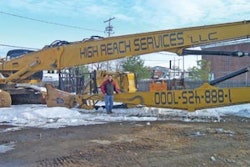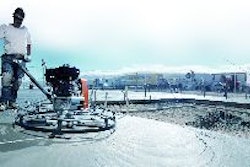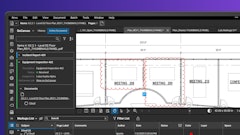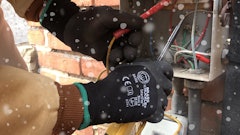
One of the biggest challenges of running a business is learning how to leverage limited resources. Of all the resources needed for running a successful business, there is only one that can't be bought, borrowed, negotiated or recruited: TIME.
Time never stops. It never takes a holiday. It never goes on vacation. It just marches on.
If you could somehow slow down, or freeze time, you could perform all the work. You could close all the sales. You wouldn't need employees. You wouldn't miss out on good projects.
Obviously, stopping time is not possible so you can't afford to misuse it.
Do you know where time is most often misused?
Chasing work. Specifically, chasing the wrong work.
Most business owners waste tons of selling time. They waste it by failing to give sufficient thought to several questions:
- Which prospects should we invest our efforts with?
- Which estimates should we pull together and submit?
- How much time should be devoted to tracking down new customers?
- How much time should we spend catering to existing customers?
- How much time should we spend in the field ensuring our work is meeting our customer's expectations (or, dare we say, wowing them)?
- How should we monitor the use of our selling time?
Luckily for us, thousands of sales professionals have already discovered that one tool covers these questions. That tool successfully guides the use of selling time. That tool is called the Sales Funnel.
The Sales Funnel
The Sales Funnel is a simple concept that captures several important points:
- It takes a lot of prospects to produce one good paying project.
- Selling progress is trackable (measurable).
- The sales cycle has several stages.
- You don't have time to mess with non-qualified prospects.
The sales funnel represents the natural shrinkage of prospects as you convert leads into sales.
Prospects enter the big opening at the top of the funnel and projects pour out of the narrow end. As you weed out prospects, and as they weed you out, your opportunities shrink as you get closer to closing the deal.
The sales funnel transforms sales management into a numbers game that can be monitored and managed. It gives you a manage-by-the numbers system for controlling the use of business development time.
We will get into the numbers game in a minute, but first let's build your sales funnel. To start, we need to identify the stages.
Identify Your Sales Funnel Stages
Stage 1: Prospect has a project under consideration.
Stage 2: Project is funded, green-lighted, and a good fit.
Stage 3: You are price competitive.
Stage 4: Prospect values your services for this project.
Stage 5: You are negotiating the price.
Let's expand on each stage.
Stage 1
This stage highlights the need to get in on the ground floor of projects before your competition learns about them. Keep your ear to the ground and monitor the volume of work that's out on the horizon. The larger the pile of work, the greater the margins. The smaller the pile, the tighter the margins (hello 2009).
If you find out about projects in time, you may have an opportunity to influence design in such a manner as to give yourself a competitive advantage. It happens...quite often in fact.
Stage 2
Stage 2 is when you should qualify the lead. Is it a good fit for what you do well? The sooner you reject unqualified leads, the less time you will waste on them and the more time you'll have to spend on leads that could turn into profitable work. Make sure the project is going to be built before investing a lot of time in it.
Consider the client, the design team, and, if already chosen, the construction manager or general contractor. Do any of them have a history of messy, costly projects? If so, consider tossing the project out of the funnel.
Stage 3
Look at the project realistically and verify you are capable of performing the work efficiently. If not, you have almost no chance of winning the project at a price that will be profitable. Don't take the chance. Toss the project out of the funnel.
Stage 4
Explore your prospect's willingness to pay a premium for your superior services. Sell, sell, sell. The first three stages are about evaluation of the opportunity. Stages 4 and 5 are about changing the competitive landscape and closing the deal.
Stage 5
Negotiating the deal means you are agreeing to a price that you can live with - preferably without being the lowest bidder.
It may mean you have last look. It may mean that you are being awarded the project without competition. Stage 5 may be many things but most of all it is about closing the deal, signing the contract, and landing a profitable job.
Bid Work
A word about bid work and it's affect on the sales funnel.
IF you are competing for a true low-price-wins project, the project converts into a sale from Stage 3. If any other factor comes into play, the project must move through Stages 4 and 5 to become a sale. If you aren't moving it through those two stages, your competition probably is.
Playing the Numbers
As you build history with your sales funnel, you will be able to formulate ratios between each stage.
For example, you may need your marketing system to produce 10 green lighted projects for you to find five you will be price competitive on. Of the five, on average only three clients will truly value your services of which 2 will turn into projects. And you may need 30 potential projects to produce 10 real projects. Know and monitor your averages.
Obviously, selling effectiveness impacts the conversion ratios between Stages 3, 4, and 5. The better your sales team is at matching up client needs to your capabilities, the higher the conversion rates - and the less leads needed to reach your sales targets.
Time Management of the Sales Funnel
How does the Sales Funnel help you allocate time? By forcing you to spend time on ALL qualified prospects, not just on those you are about to close.
The sales funnel forces you to stay in touch with your entire sales pipeline by giving you a clear picture of your upstream opportunities. Tracking the number of prospects in each stage and making them visible is what makes the sales funnel process so effective.
Without a Sales Funnel, you will tend to concentrate on closing (stage 5) until you no longer have anything to close. This is a natural result of ignoring the prospective projects that are in Stages 1 through 3. Over emphasis on closing empties the funnel and creates the all too familiar boom-and-bust sales cycle.
You must spend time making sure that all the stages of your sales funnel remain adequately filled.


















